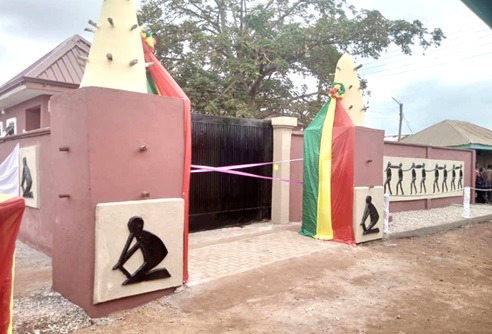In the heart of Salaga, the East Gonja Municipal capital in the Savannah Region, lies a historical site that echoes the profound suffering and complex history of the Trans-Saharan slave trade.
The Salaga Slave Market, once a bustling centre of human misery, now serves as a stark reminder of the past and a testament to the resilience of those who endured it.
Founded around the 19th century, it served as a market where slaves were brought and transported to the coast for export to European countries during the Trans Atlantic Slave Trade, as well as an outpost for the movement of slaves along the Trans-Saharan routes.
Its strategic position along trade routes made it a crucial node in the network that transported enslaved people from the interior of Africa to the coast for shipment to various parts of the world.
History has it that the market thrived on the back of human exploitation, where countless individuals were sold into servitude and their lives forever altered by the harsh conditions of the trade.
![]()
A statue of a slave at the refurbished site
To date, there are a lot of remnants at the market that provide a tangible link to the past, particularly the horrifying and truamatising moments.
They include a well where the slave traders drew water to bath the slaves, the stone foundations of once-imposing structures, and the faint outlines of the pathways that once teemed with activity, as well as steel chains that were used to tie them.
Learning centre
Narrating the history of the now tourist site, a Historian and Tourism Enthusiast, Mahama Muniru Cosmos, said the site was not just a relic but a place of memory and learning.
He indicated that around the 16th century Salaga was one of the leading market centres in West Africa.
It was a bustling hub of trading goods such as kola nuts, beads, ostrich feathers, animal hides, textiles and gold.
However, the slave traders came in around the 19th century to engage in human trading.
"There were over 1,000 wells over there dug by community members to sell water to slave owners to bath their slaves because Salaga was having a serious drought, but we are losing them through encroachment," Mr Cosmos said.
Development
For the first time in history, the site has been developed to preserve its rich history and boost tourism in the area.
![]()
One of the wells from which water was fetched to bath the slaves
The new site consists of an information office, slave wells and statues of slaves, showing how they were chained and handled in the 19th century at the market for sale.
Inaugurating the site last month, the Minister of Tourism, Arts and Culture (MoTAC), Andrew Egyapa Mercer, described the market as a key centre where slaves were exchanged for kola nuts, cowries and gold, underscoring the grim reality of human commodification during the dark period of history.
He said the facility would boost the local economy and also foster cross-cultural understanding between different communities, both locally and internationally. Mr Mercer charged local authorities and other stakeholders to take proper care of the facility to attract more tourists to the area.
Writer's email: mohammed.fugu@graphic.com.gh

